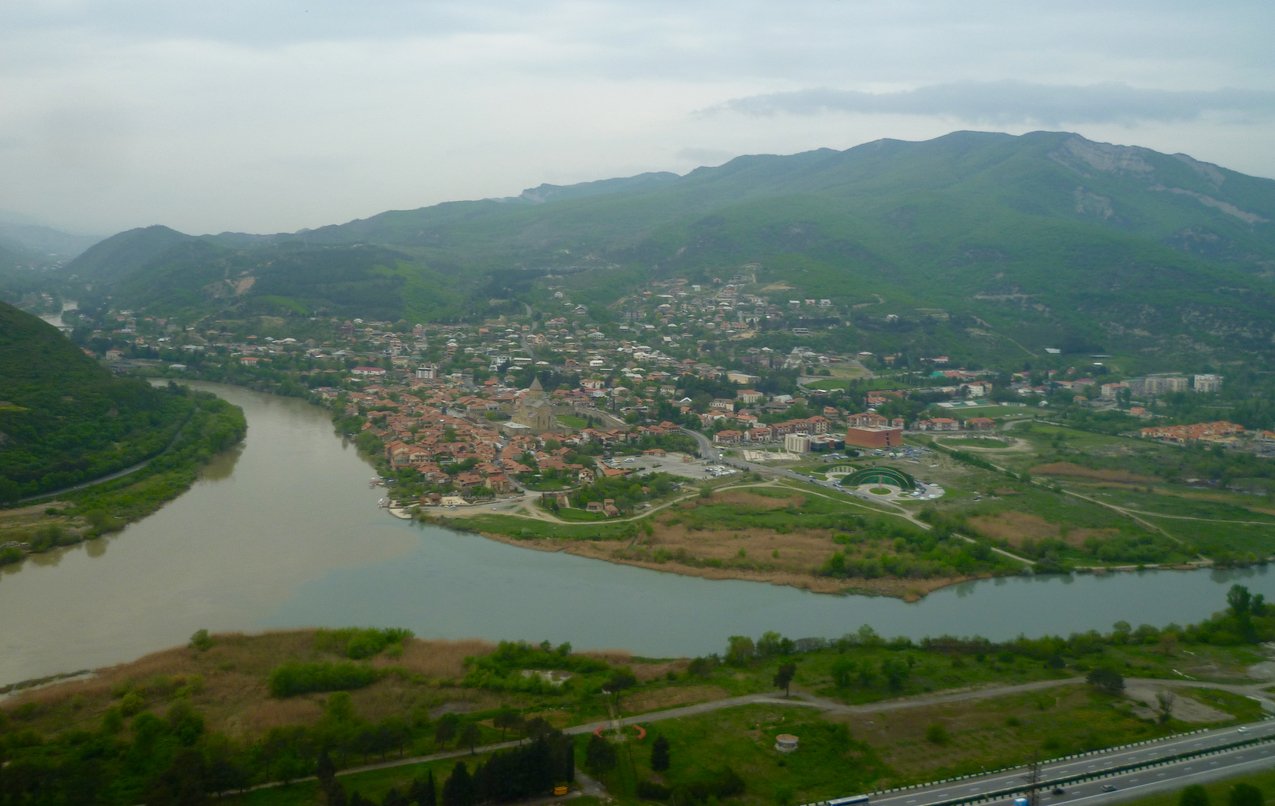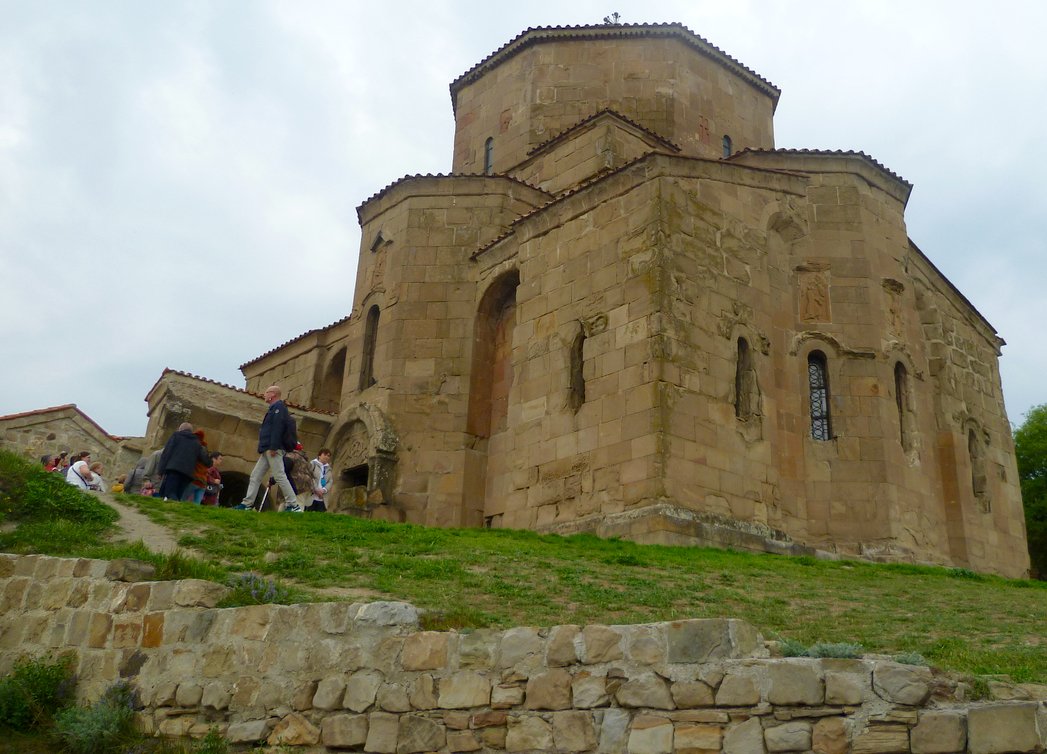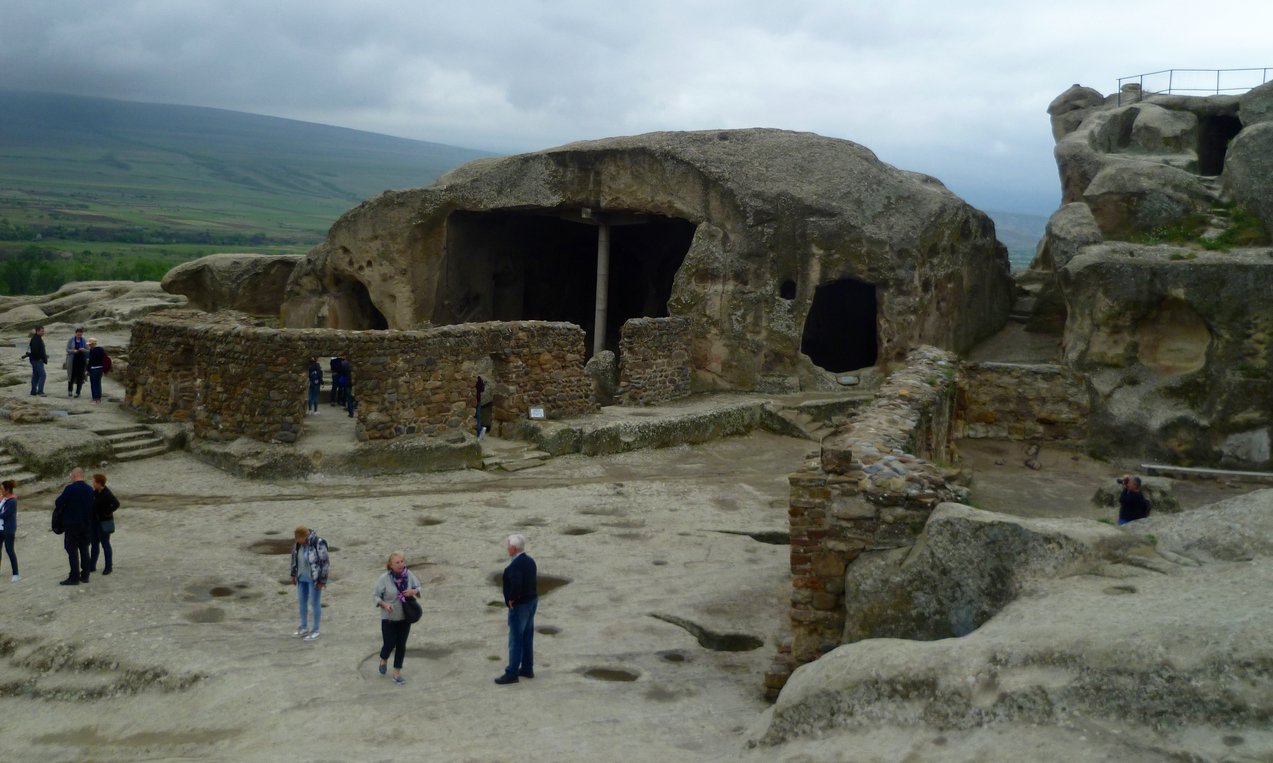Sights close to Tbilisi
After the first few days in Georgia, it was time for me to join my pre-arranged tour group. I don't usually do group tours, so I was a little apprehensive, but, to be honest, I was simply too lazy to research everything I needed to know about visiting Georgia; joining a tour meant I didn't have to.
A friend in Belgorod recommended the tour group, and, thankfully, I was immediately put at ease after meeting my fellow travelers. We were six women between the ages of 35-55 and we formed an interesting mix of post-Soviet reality: two from Moscow, one from Kiev, one from Kharkov (the Ukrainian sister of Belgorod), and one woman, originally from Uzbekistan, who is now an immigration lawyer in the United States. I was certainly the odd man out as the only person who had not grown up in the Soviet Union. We spoke in Russian during the trip, but occasionally my new companions piped up in English if I was confused about something.
Mtskheta
Our first jaunt was to a town about twelve miles north of Tbilisi called Mtskheta. It’s not as hard to pronounce as it may seem at first. This city is so old– it was founded in Fifth Century B.C.E. In the First Century A.D., it’s where Christianity first took hold in what is now Georgia. The Georgian Orthodox Church considers it a holy city.
First we visited the Jvari monastery, which dates from the Sixth Century. During Soviet times it was preserved as a national monument, but upkeep wasn’t great. The main church is now active again and it attracts more visitors than ever. Erosion threatens the monastery and the United Nations has put it on a watch list. I don’t know what good putting something on a “watch list” does; I suppose I’ll have to look that up.
The church has unusual architecture in that it has four apses and four niches. I’m remembering from my college humanities class that an ‘apse’ is a half-dome; a niche is a smaller half-dome. Maybe you can get a better sense from this photo.
This architecture is important because it formed the basis for a whole style of architecture common throughout Georgia, Armenia, and elsewhere in the Caucasus. The bas relief over this doorway is important because it shows the Georgian Cross– it’s more square than the typical Catholic cross. Georgians actually have another kind of cross, also, but we’ll get to that later. Downhill from the monastery is the Svetitskhoveli Cathedral, which I fully admit to not being able to pronounce. The area was packed with tourists and priests. One priest was blessing us, which would have been fine, except that he was also flinging big splashes of holy water on us. People were walking way out of their way to avoid it. Forgive me for thinking ill of this priest, but I can’t help but suspect his true goal was to soak annoying tourists. Christ’s robe is supposedly buried here, sort of. That is, it was buried with a woman and then from that woman’s grave grew a large cedar tree, the branches of which formed the foundation of the church. One piece of the cedar tree went up into heaven and then when it came down again a liquid started flowing from it that heals people. In terms of preservation, the Cathedral is kind of a mess. The original 5th Century foundation is only visible in a few places– it was built over in the 11th Century. Then there were invasions by Arabs, Persians, and others and a few earthquakes. Plus, when Georgia was part of the Russian Empire, many of the frescoes were whitewashed over. But considering all that, it looks pretty great inside. The photo on the right shows the place where Christ’s robe/tree branch is. There was indeed some sort of liquid present there, but it was unclear where it was coming from. Pilgrims were rubbing it on themselves. Note that because this is a working church, women are required to cover their heads, as in all Orthodox churches. I also had to put on a skirt to cover my knees– they are provided at the entrance.
The inside is really amazing. But it’s hard to keep track of which part was done when. The church also contains many old crypts, like this one from the 1700s.
The church had a stone iconostasis, which is something I had never seen before.
One of the best parts of this tour, though was when our tour guide showed us the partially excavated nunnery. It was discovered in the 1970s by Soviet archaeologists, but only part of it remains. Anton, our guide, showed us how only a third of the nunnery is currently standing, but that you can see where the rest of it was by examining the foundation. He jumped around for a while in the ruins and then we joined in to imagine what the nunnery must have been like.
Then we all got coffee and snacks before getting back on the minibus. Some of us maybe even had some wine out of paper cups.
Gori
On the way to someplace else, we happened to drive through Gori, the city of Stalin’s birth. I was vaguely interested in seeing it, but our tour leader and told me they don’t tour Gori out of principle. She says the people who run the Stalin museum are insufferably pro-Stalin and she personally can’t take it. I understand. For me, Stalin is an interesting and problematic historical figure. For her, Stalin is the reason her father was taken from his home and probably died an early death. For her, it’s personal.
But she wasn’t with us when we happened to find ourselves in Gori, and our bus driver was more than happy to let us out for a few minutes to gawk at this oddity: Stalin’s childhood home. It has a marble structure built over it now, and it kind of looks like Lenin’s tomb in Moscow.
Across from the house is a pedestal, where a monument to Stalin used to stand. Stalin is tricky business in Gori. Many of the old-timers of the city have been against the dismantling of Stalin monuments and have demanded they be restored. Stalin died in 1953 but these are recent fights, having more to do with Georgian nationalism and attitudes toward Russia than Stalin himself. This weird 2010 youtube video shows a man, in Georgian, saying that Russians come to Gori to pay respects to Stalin and they should be able to. How unimaginably strange. Just two years earlier Russian forces shelled Gori as part of the war over South Ossetia. And yet there’s this Georgian man saying that Russians should be able to come see Stalin statutes in Gori. See how confusing this area is?
Uplitssikhe
It took me all day to learn how to pronounce the name of this place. But Uplitssikhe is, quite simply, one of the coolest places I have ever been. It is one of the oldest settlements in Georgia. The oldest parts are from about 1000 B.C.E. When Christianity came to Georgia, Uplitssikhe declined in importance but then underwent a renaissance of sorts during the Muslim conquests in the 8th and 9th Century. Once the Mongols invaded in the 14th Century, it stopped being a place where people lived. Like Mtskheta, it is suffering decline. Major parts of the ruins were lost in an earthquake in 1920. What we can visit today is apparently less than half of what was originally there and has been excavated by archaeologists since 1957. You can still see sites where current-day archaeologists are continuing to work.
We went in the back way so that our guide could make the point that this ancient fortress had a structure similar to more modern ones, with a “secret” passageway to the river so that the city would not be deprived of water should it fall under attack. Buildings were originally carved into the soft rock and then additional wood structures added later. There are streets and drainage canals. There’s even a theater. Here’s one small part of it:
Look, here you can see ancient steps leading up from the road. Those pillars are all new, put in to keep the structures from collapsing.
I don't know when these carvings happened, but someone got real fancy with decorating the ceiling of their carved room:
Speaking of carvings, our guard told us that, at various times, soldiers from the Russian Empire were stationed here. They apparently carved their names in the rocks. You can tell it's from before the Russian Revolution because it uses the pre-revolutionary spelling conventions. There also appears to be some Arabic graffiti here.
Without people in the photos, maybe you can't tell how big this area is.
Like all hilltop fortresses in Georgia, the view is breathtaking.
And this is still in the foothills of the Caucasus. Wait until you see the views from higher up, which is where we went next.























